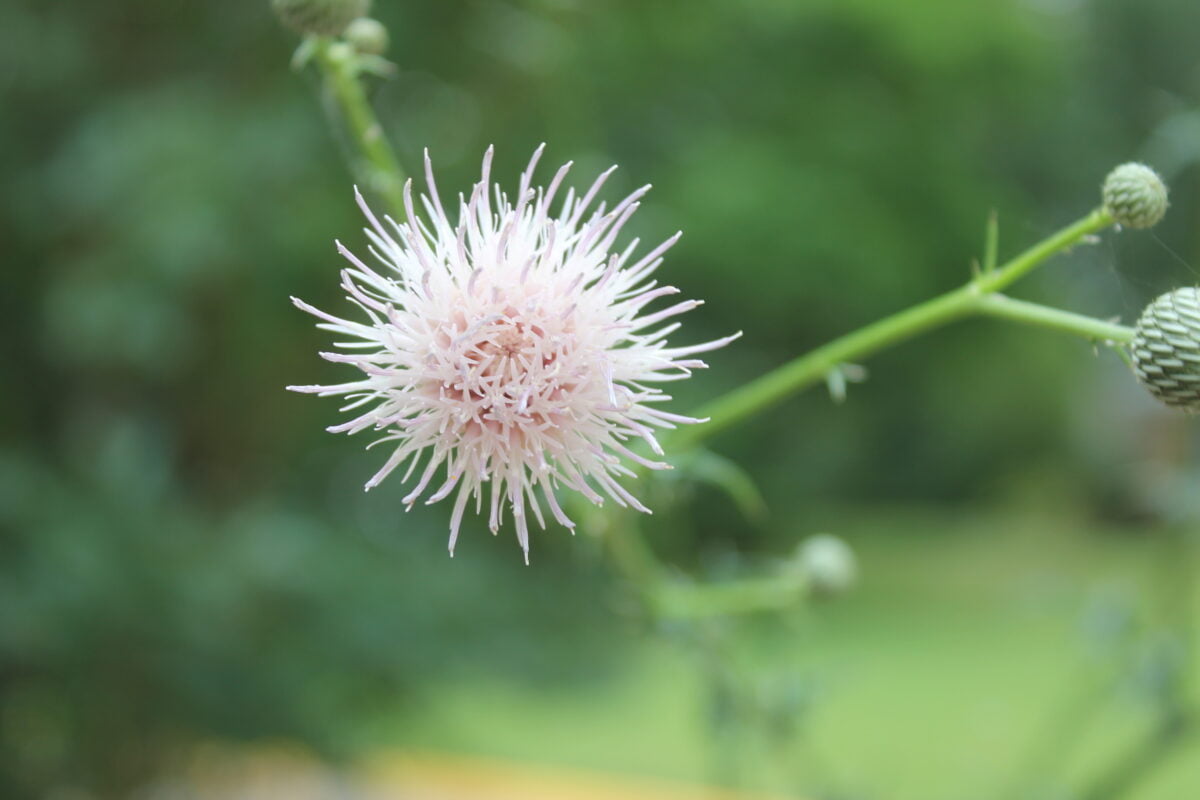Scientific name: Cirsium japonicum
Other common names: Pink beauty, Early pink beauty, Thistle, Cirsium, Plum Thistle. Chinese, 大蓟. Pinyin, Dà Jì.
Cirsium is a genus of perennial and biennial flowering plants in the Asteraceae family, one of several genera known commonly as thistles – milk thistle is also a species of the family Asteraceae. They are better known as plume thistles. They are mostly native to Eurasia and northern Africa, with about 60 species from North America. Several species have been introduced outside their native ranges. These differ from other thistle genera (Carduus, Silybum and Onopordum) in having feathered hairs attached to the shells that house their seeds, called achenes. This helps them disperse their seeds to reproduce by air.
Identification
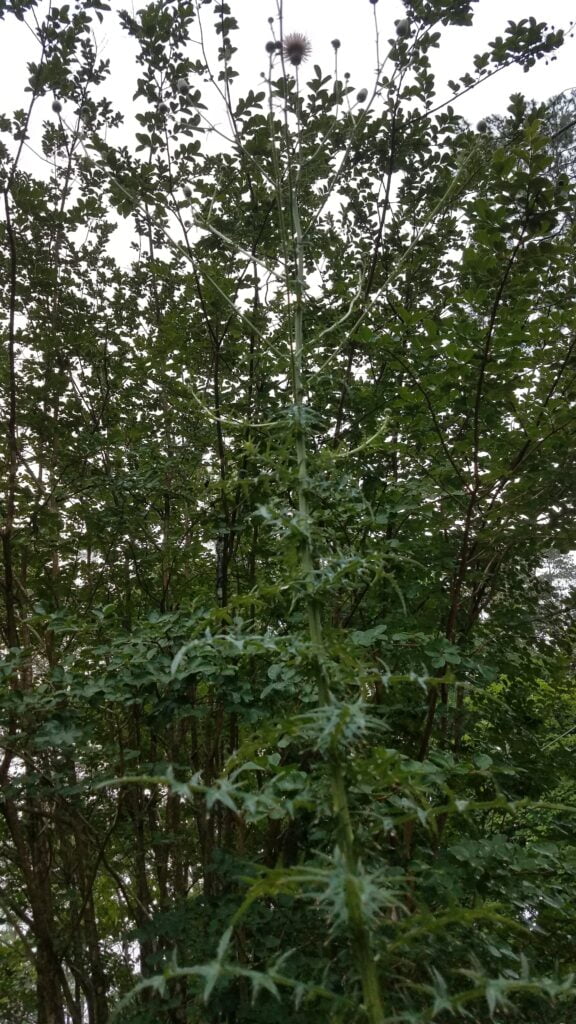
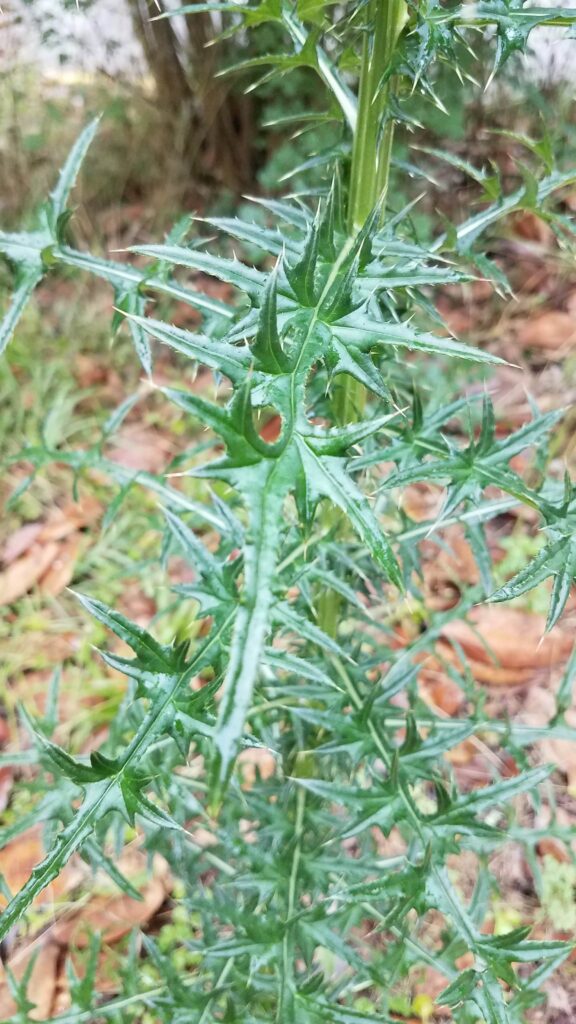
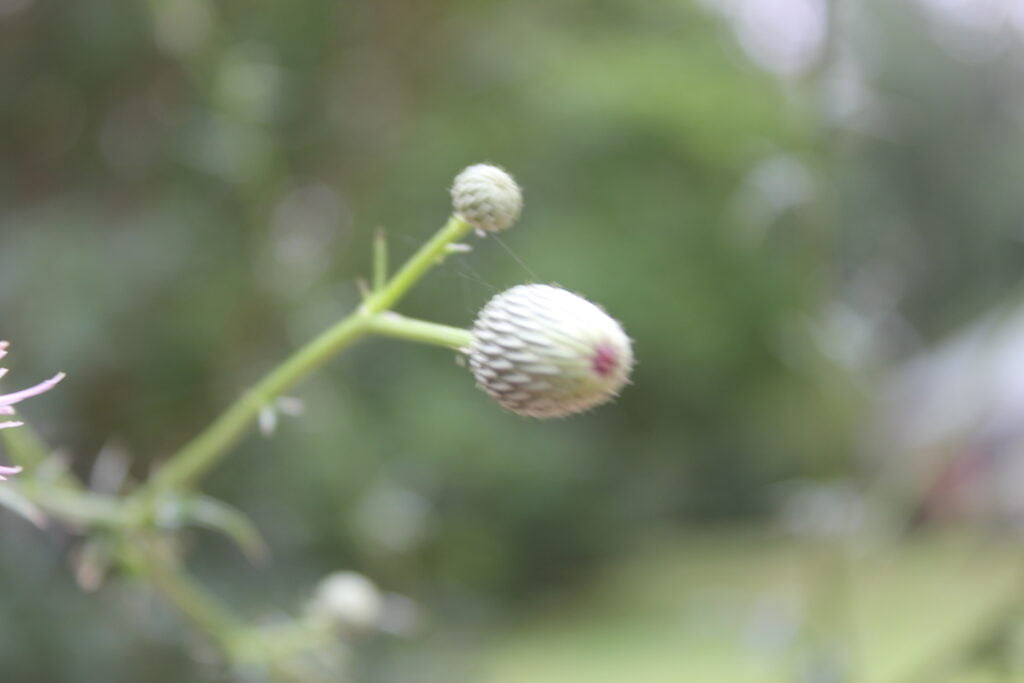
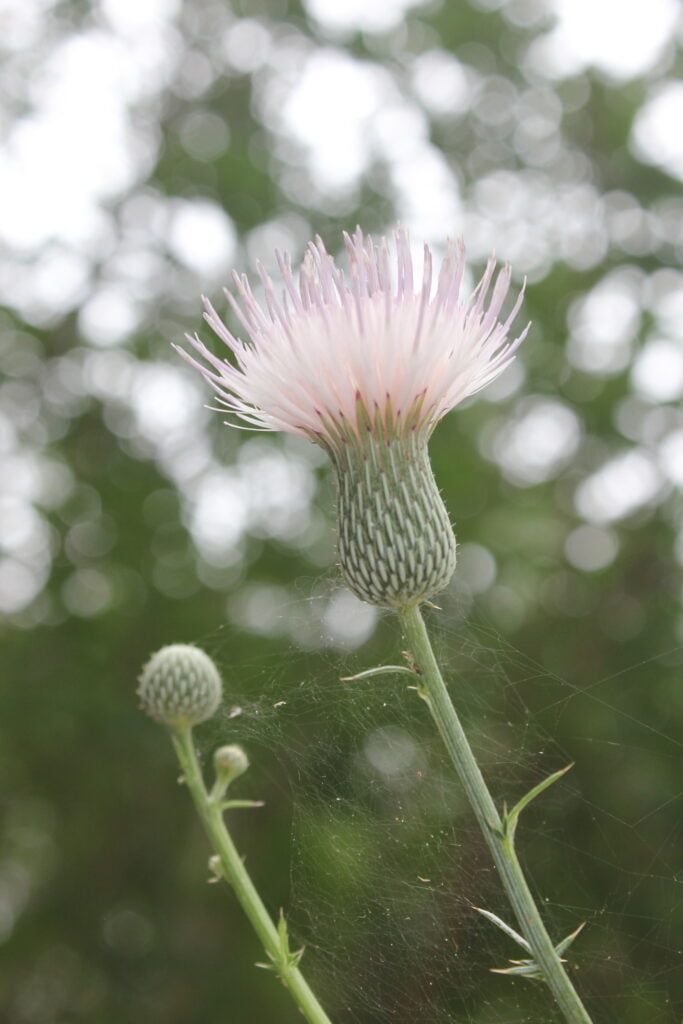
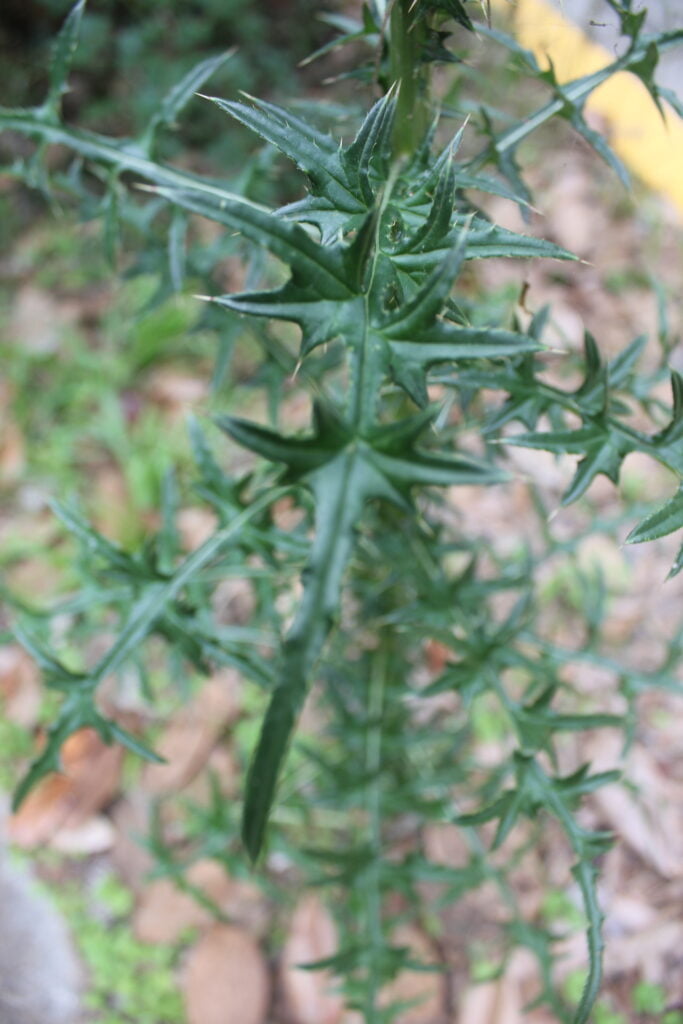
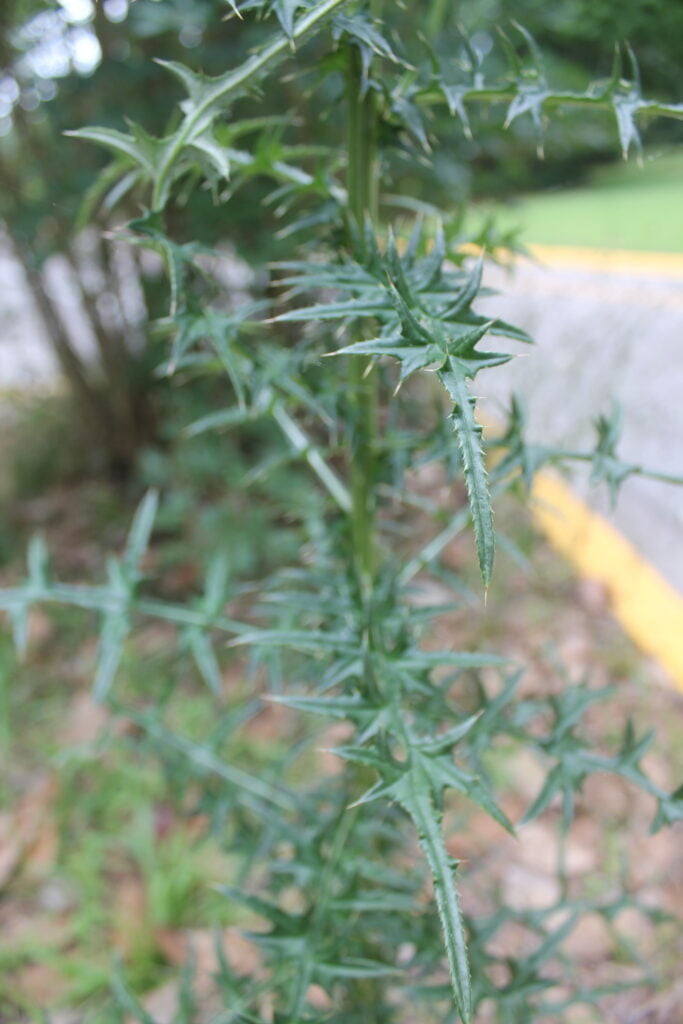
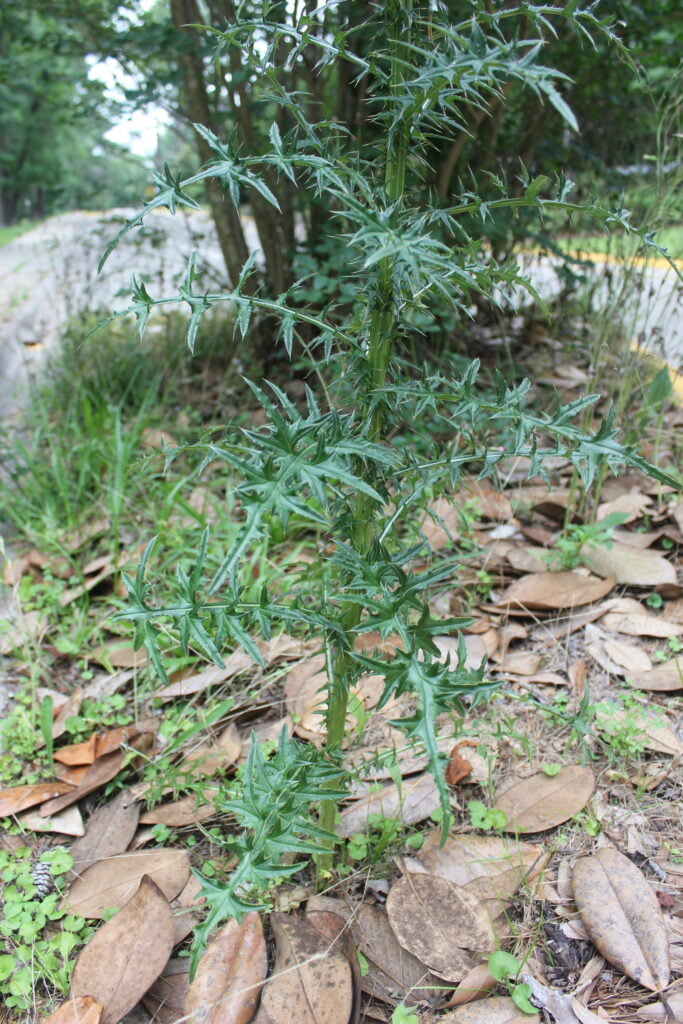

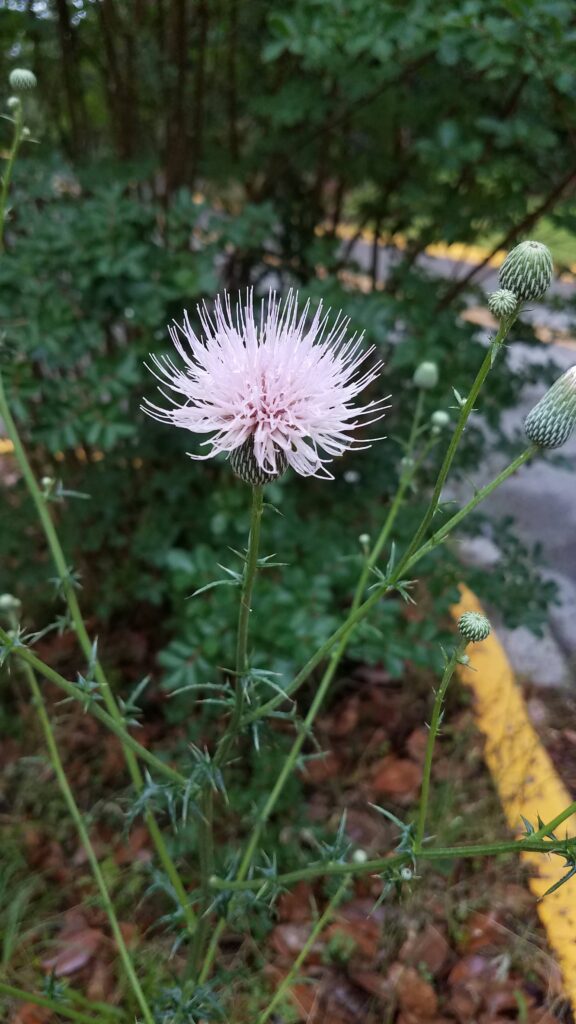
Thistles are known for their showy flower heads which bloom April to August. They are usually purple, rose, or pink. There are also yellow or white varieties. The flowers are at the end of long stemmed branches and are visited by many kinds of insects. They have straight stems and prickly leaves. The flowers have a characteristic enlarged base which is green and commonly spiny like the leaves. The leaves are alternate, growing in pairs on opposite sides of the stalk, and some species can be slightly hairy.
They can spread by seed, and also by underground root stalks, called rhizomes. Creeping thistle, Cirsium arvense, is particularly known for spreading by root stalk. The seeds have tufts of tiny hairs, or pappus, as mentioned above, which can carry them far by wind.
Growing/Foraging
Cirsium thistles are used as food plants by the larvae of some butterflies and moths of the Lepidoptera species like the Little metalmark (Calephelis virginiensis) and Painted lady (Vanessa cardui) butterflies. The seeds are attractive to small birds such as the American goldfinch. This species of plant has both male and female organs (it is a hermaphrodite) and is therefore self-fertile. It is pollinated by bees, flies, moths, butterflies (Lepidoptera), and beetles.
Japanese thistle can grow in a variety of soil types. It can do well in light (sandy), medium (loamy), and heavy (clay) soils. Likewise, it can adapt to different soil pH and is found growing in acidic, neutral, and basic (alkaline) soils. It cannot grow in the shade, preferring full sun, and it does prefer moist soil.
Sustainability
The plant is not listed as endangered. It is listed as a harmful weed in Arkansas, California, and Iowa. 1
Medicinal and Food Properties
Japanese Thistle is common in Traditional Chinese Medicine with humans 2 as well as animals. It is an antihemorrhagic. 3 and antidiabetic 4 The roots are anti-inflammatory, diuretic, and haemostatic.
Overall, the plant is best known for stopping bleeding. A decoction of the dried roots is used in the treatment of boils and carbuncles, acute appendicitis, uterine bleeding, blood in urine (haematuria), nose bleeds, vomiting blood (haematemesis), and traumatic bleeding. The leaves are haemostatic and diuretic. The stem is haemostatic. 5
Recent rat studies also support C. japonicum use in the treatment of menopause symptoms, before and after it’s initiation. 6 The word ‘Cirsium’ derives from the Greek word kirsos meaning ‘swollen vein’. Thistles were used as a remedy against swollen veins.
The leaves are edible when cooked and despined. Very palatable in the Spring, they are used with the young roots.
Safety
As always it is recommended that you consult a medical professional for any serious illness. Since Japanese thistle is used in Traditional Chinese Medicine, or TCM, a TCM practitioner would be a good guide. The herb may cause some diarrhea and is not recommended during pregnancy or for individuals with spleen conditions. It is also not recommended in conjunction with Chinese liquorice (Glycyrrhiza uralensis or Gan Cao).
Recipes
Homemade Herbal Tincture or Herbal Extract
Herbal tinctures (aka herbal extracts) are the most potent way to deliver the benefits of herbs to your body. For this reason, you might consider using this form above infusions, teas, or capsules.
Ingredients
- dried roots or herbs
- vodka 80 proof or more – preferably 100 proof
Instructions
- Put herbs in a quart size Mason jar to about 1/2 full, not packed down.
- Pour a bit of boiling water over the roots/herbs to help release nutrients (optional).
- Pour vodka over all to fill the jar to just below the bands.
- Cover the jar. Tip upside down a few times to wet all the herbs with the vodka.
- Put in a cool, dark location for 4 to 6 weeks. Each day during this time, tip the jar upside down a few times.
- After steeping for 4 to 6 weeks, strain. Discard herbs, compost if possible, and put extract in jar(s) or 4-ounce dropper bottles.
- Store in a cool and dark location. Keeps a long time.
Sources

